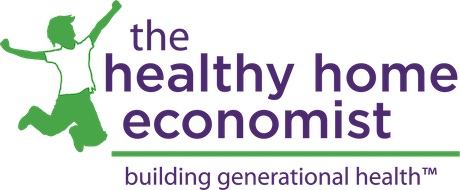With so many food philosophies today, it is important to be able to determine what is the best traditional diet for you individually.
A frequent email request I receive from readers is to post a few days or a week of the Traditional Diet I eat or what my family eats.
Seems like a simple enough request, right?
Just write down our meals for a few days and post it.
No big deal.
I’ve posted my personal menu before when I was on the GAPS Diet, but I’ve never posted a food diary while eating a regular Traditional Diet.
With many people asking for this, you might wonder why I haven’t done it.
Let me explain.
There are many Traditional Diets!
During Dr. Weston A. Price’s travels around the world in the early 1900s, he studied 14 of them in detail. These cultures all ate quite differently.
Some ate no plant foods, some ate a lot. Some consumed raw dairy, some did not.
The variations go on and on.
The common denominator between these 14 cultures is that they all had at least one sacred food, which was always from an animal, never from plants. A few of these cultures such as the Eskimos and Maasai even followed a mostly carnivorous diet.
These sacred foods were discovered by lab analysis to be extraordinarily high in the fat-soluble vitamins A, D, and Vitamin K2.
What’s more, these Traditional Cultures were consuming the fat-soluble activators at a rate about 10x higher than Americans of the 1930s!
These sacred foods were revered by the Traditional Cultures that consumed them for bestowing easy fertility and healthy babies.
Ample quantities of these sacred foods were provided to growing children, pregnant mothers, and the elderly to maintain health including the prevention of tooth decay.
With so many different Traditional Diets, you can see why it could be misleading for me to post what I eat specifically.
My Traditional Diet could easily be misconstrued by some that this is the way to eat traditionally, when it is, in fact, only the implementation of a mix of Traditional Diets that works for me, given my unique genetic heritage, health history, home environment, toxin load, food budget, etc.
How to Determine the Best Traditional Diet for YOU
So how did I come up with the typical way I eat?
Here’s the approach I used.
First, you need to read Dr. Price’s book Nutrition and Physical Degeneration. There is absolutely no substitute for reading this amazing book.
Just seeing all the pictures alone is guaranteed to rock your world!
This book really should be required reading for every dietician, nutritionist, doctor, nurse, or anyone else working in the healthcare field today.
It is quite laughable for anyone working in the field of nutrition to attempt to counsel people on the best way to eat without intimate knowledge of the groundbreaking work of Dr. Price.
That is a clear example of the blind leading the blind, don’t you think?
Once you’ve read Nutrition and Physical Degeneration, then you should read Nourishing Traditions Cookbook, which is the practical implementation of the Traditional Diet blueprint.
If , by that point, you are still confused about how to implement a Traditional Diet for yourself, then you can do what I did.
What is YOUR Ancestral Heritage?
Take a look at your genetic heritage and focus your Traditional Diet on those foods consumed by your specific, cultural ancestors.
In my case, the Northern European cultures described in Dr. Price’s book fit the bill.
The Northern European cultures did not consume rice, beans, and corn, for example.
These cultures also ate little fruit or raw vegetables. So, my Traditional Diet at home does not include these foods very frequently.
Instead, I focus on sourdough bread, raw dairy, fermented vegetables like sauerkraut, and meat, cooked stews and soups like the mountaintop Swiss culture.
I also include seafood and oats, like what the isolated Gaelics consumed.
Of course, there is variation in our diet based on the other cultures studied by Dr. Price, but we focus our staple whole foods on the cultures from which we obtained our ancestry.
My cultural ancestors didn’t eat that many vegetables unless they were fermented or cooked in stews or butter, for example.
Consequently, raw veggies are not consumed much at all in our home except for the occasional veggie juice or salad.
Watch out for Modern Fads Masquerading as Ancestral
Are you drinking regular green smoothies?
You need to know that no Traditional Society ever consumed raw plant foods at that kind of rate.
Given that many green vegetables contain anti-nutrients like oxalic acid or are goitrogenic (thyroid depressing), you are really rolling the dice with this modern-day health fad even if you “rotate” your greens.
While this may go against conventional “wisdom” to eat raw veggies, fruits, and salads with abandon, to that I say “why”?
The healthy traditional cultures that comprise my ancestry didn’t eat much in the way of vegetables and fruit unless fermented or cooked, and they were perfectly healthy with straight teeth free from tooth decay, high immunity to disease, and excellent vitality into old age.
Sounds good to me.
Those are the same health goals I have for myself and my family, so I’m going to stick with what works, not nutritional “science” that blows with the wind and is more interested in influencing your buying habits than your health.
Figure Out Your Ancestry then Go from There …
What if you aren’t of Northern European heritage?
What if your genetic heritage hails from South America, for example?
In that case, I would suggest reading the chapters on the South American cultures in Nutrition and Physical Degeneration and focusing your staple foods on what those cultures emphasized, which was corn, beans, and fish – grains and legumes prepared in a traditional manner!
If you are of Asian descent, rice is likely to be a better choice for you instead of the oats and wheat in my home.
We don’t eat rice much in our home.
We don’t do as well on this grain as we do on wheat and oats, which is what our ancestors ate. An exception to this is wild rice, which is not really even rice at all.
Are you getting the picture somewhat?
Sacred Foods Common to ALL Traditional Diets
However you choose to implement your Traditional Diet, the most important key is to focus on ample amounts of the sacred foods.
These foods include raw grassfed butter, organ meats like liver, egg yolks from outdoor chickens, fish eggs (roe), and fish liver oils like cod liver oil.
Don’t skimp on these critical foods!
You can round out your diet with whatever whole food staples comprised the general eating pattern of your ancestors, but the sacred foods should always remain the focal point of the diet to ensure maximum health and immunity to disease, both infectious and chronic.
I hope this discussion helps you along the path to finding the best implementation of Traditional Diets for you and your family. As you can see, it’s not as simple as just posting a meal plan.









I tried salmon roe and could only eat it in scrambled eggs and don’t know if the cooking affected the benefit of eating salmon roe. Do you have any recipes that would help me add this to my diet?
The cooking won’t harm the roe. Try mixing it with some creme fraiche and eating on crackers.
What would you recommend to people who have very mixed background? I’m Brazilian, my dad comes from the US, with ancestors from England. My mom is a Brazilian mix of Portuguese, black African and native South American Indians. Also, my children gets even more complicated as my husband is descendent of Italians with the Brazilian mix.
Trial and error to see what mix of those traditional diets seems to work best for you. Or, maybe all of them work well in a best case scenario.
May I ask what your advice would be for someone of mixed race? I’m 50% Latin American and 50% European (A mix of Spanish and English)
I had been eating like this and really believed in it…but have ended up pre-diabetic and with “metabolic syndrome.” So I’ve changed to a whole foods plant-based, which is ‘very vegan,’ and will see if my health improves (been at it only about 2 months now). I was so worried about CVD but finding out my A1C numbers shocked me…no diabetes in my family in the past few generations, as far as I know!
Jeanne. Whole grain sourdough bread, or soaked grains are the traditional way to eat grains. The fermentable fiber in whole grains is soluble, and it is broken down by our bacteria in our microbiome, which turn it into nutrients for us, as well as creating mucin to protect our stomach lining. Other soluble fiber foods would be legumes, nuts and seeds, and some vegetables and fruit fibers. Most fruits and vegetables are mostly cellulose plant fiber which our microbiome doesn’t necessarily have the ability to break down and ferment into nutrients. Rather these insoluble fibers help to sweep the intestines, help move the soluble fibers out that bind to toxins. We need the insoluble to push the soluble fiber through. So in essence, you can be feeding your microbiome, while eating a traditional type of diet, as long as you are preparing your grains, legumes, and nuts and seeds properly.
I have Irish, Welsh and French ancestry. What would be the main foods consumed in that part of the world?
Hey! I was wondering if the digital copy of the book was the same as the paperback version you have linked. It’s called Nutrition and Physical Degeneration : a comparison of primitive and modern diets and their effects. Trung Nguyen. If not I will order the paperback version. Thanks!
For me… evidence based is also self-experience.
I do not do well on the same diets as my ancestors. My body does very well on raw vegan foods.
As soon as I eat breads, meat etc… I get ill.